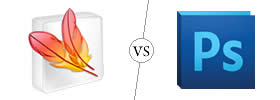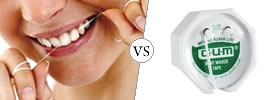Difference between LCD and CRT
Key Difference: LCDs (Liquid Crystal Display) are displays that use liquid crystals sandwiched between two sheets of polarizing material. The images are displayed when electrical charge is applied to the crystals. CRTs (Cathode Ray Tube) are vacuum tubes that use electron guns and fluorescent screens to display images. CRTs and LCDs vary greatly and LCDs are replacing CRTs in today’s world. LCDs are lighter, slimmer and consume less power compared to CRTs. However, CRTs have a sharper image quality compared to LCDs.

LCDs (Liquid Crystal Display) are displays that use liquid crystals sandwiched between two sheets of polarizing material. The images are displayed when electrical charge is applied to the crystals. An LCD uses a select type of liquid crystal known as twisted nematics (TN), which are twisted in shape. Applying a current to these crystals causes them to unwind to a certain degree depending on the voltage. A LCD is in a layer formation, it starts with a mirror on the back for reflection, followed by a piece of glass that has a polarizing film on the bottom side, and a common electrode plane made of indium-tin oxide on top. After that is a layer of liquid crystals, followed by another piece of glass with an electrode and another polarizing film, which is at a right angle to the first one. The LCD is then hooked up to power source that provides a charge to the crystals and causes them to create an image on the screen. LCDs also have a backlight that makes the image visible to the user.
 CRTs (Cathode Ray Tube) are vacuum tubes that use electron guns and fluorescent screens to display images. A heated filament or ‘cathode’ is in a vacuum in a glass tube, while an electron gun pours electrons into the tube and the electrons are attracted by the positive anode in the tubes. The screen is coated with phosphor, which glows after is hit by the electron gun. Color CRTs have three different electron guns, one for each primary color. A shadow mask, thin metal screen filled with holes, is used to control the points where the electron beams passes to focus on a single point on the CRT’s phosphor surface. Another method is an aperture-grill, which uses tiny vertical wires. Aperture-grill displays are more expensive compared to shadow mask CRTs. However, CRTs are becoming obsolete as it is being replaced by LCDs, OLEDs, Plasmas, etc.
CRTs (Cathode Ray Tube) are vacuum tubes that use electron guns and fluorescent screens to display images. A heated filament or ‘cathode’ is in a vacuum in a glass tube, while an electron gun pours electrons into the tube and the electrons are attracted by the positive anode in the tubes. The screen is coated with phosphor, which glows after is hit by the electron gun. Color CRTs have three different electron guns, one for each primary color. A shadow mask, thin metal screen filled with holes, is used to control the points where the electron beams passes to focus on a single point on the CRT’s phosphor surface. Another method is an aperture-grill, which uses tiny vertical wires. Aperture-grill displays are more expensive compared to shadow mask CRTs. However, CRTs are becoming obsolete as it is being replaced by LCDs, OLEDs, Plasmas, etc.
CRTs and LCDs vary greatly and LCDs are replacing CRTs in today’s world. LCDs are lighter, slimmer and consume less power compared to CRTs. LCDs also give off less radiation compared to CRTs. However, CRTs have a sharper image quality compared to LCDs. LCDs can face with the problems of dead pixels, where a pixel dies and leaves small dot on the screen that does not change; whereas CRTs can face with burn-in problems. Other differences are listed below:
|
|
LCD |
CRT |
|
Size (screen viewable size) |
Viewable size is reduced by 0.1” |
Viewable size is reduced by 0.99” to 1” |
|
Thickness |
Minimum 1 inch; Pretty slim |
Bulky due to the heavy back |
|
Weight |
Lighter |
Heavier |
|
Image Quality |
Slightly less sharp images |
Sharper images |
|
Energy Consumption |
Consumes less energy |
Consumes more energy |
|
Refresh Rate |
Needs refresh rate (72hz minimum) |
No refresh rate (fixed at 72hz) |
|
Screen Flatness |
100% 90 degree flatness |
Only Mitsubishi and Sony’s aperture grille are 100% flat, rest are not |
|
Radiation |
Small amount of radiation |
Has a significant amount of radiation |
|
Glare |
Less glare |
More glare |
|
Automatic Readjustment |
Auto resize button; readjusts the pixels |
The Auto-fit does not properly readjusts the image |
|
Burn-In |
Doesn’t not face burn-in; but susceptible to image persistence |
Burn-in can occur |
|
Running Temperature |
Cooler than CRT |
The back gets warm |
|
Dead / Stuck Pixel |
Can happen |
Doesn’t happen as images are “painted” |
|
Price |
Expensive compared to CRT |
Cheaper |
|
Resolution |
Native resolution works best, other resolutions may lose image quality |
Can be used till max resolution without losing image quality; has multiple resolutions |
|
Contrast |
15000:1 |
Ratio changes according to types. Can range from 150:1 to 250:1 |
|
Life Span |
60,000 hours |
Approximately 43,800; depends on usage |
|
Colors |
32 bit |
8-bit max, 16.7 million colors. |
|
Viewing Angle |
Depends on the technology |
Wide viewing angle |
|
Blackness |
Blackness varies from dark gray to gray |
True black |
|
Benefits |
Panels weigh less than plasma; use less energy; light; thinner; emits less electromagnetic radiation; no bleeding or smearing |
Easy to move as cannot be wall mounted; good picture quality; cheaper; wide viewing quality; sharper image quality; multiple resolutions |
|
Limitations |
Picture slightly less natural and "filmlike" than plasmas; slower refresh rate; limited viewing angle; blacks are brighter; susceptible to burn-out and image persistence; dead or stuck pixels may appear |
Heavier, small screens; old technology (obsolete); susceptible to burn-ins |
Image Courtesy: cnet.com, clickbd.com









Comments
Great.. :)
SUVIN
Sun, 02/16/2014 - 19:10
Add new comment